Air is usually a good insulator. However, a spark can jump through dry air when the electric field strength is greater than about $40000 \mathrm{~V} \mathrm{~cm}^{-1}$. This is called electrical breakdown. The spark shows that electrical charge is passing through the air-there is a current. (Do not confuse this with a chemical spark such as you might see when watching fireworks; in that case, small particles of a chemical substance are burning quickly.)
The highest voltage reached by the live wire of a conventional mains supply is $325 \mathrm{~V}$. In theory (but DO NOT try this), how close would you have to get to a live wire to get a shock from it?
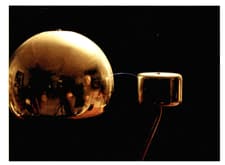


Important Questions on Uniform Electric Fields
Air is usually a good insulator. However, a spark can jump through dry air when the electric field strength is greater than about $40000 \mathrm{~V} \mathrm{~cm}^{-1}$. This is called electrical breakdown. The spark shows that electrical charge is passing through the air-there is a current. (Do not confuse this with a chemical spark such as you might see when watching fireworks; in that case, small particles of a chemical substance are burning quickly.)
Estimate the voltage of a thundercloud from which lightning strikes the ground $100 \mathrm{~m}$ below.
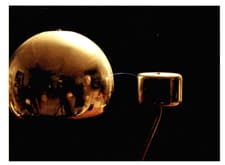
In Figure, two parallel plates are shown, separated by $25 \mathrm{~cm}$.
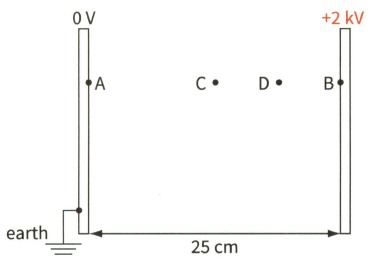
Copy the diagram and draw field lines to represent the field between the plates.
In Figure, two parallel plates are shown, separated by . What is the potential difference between points A and B?
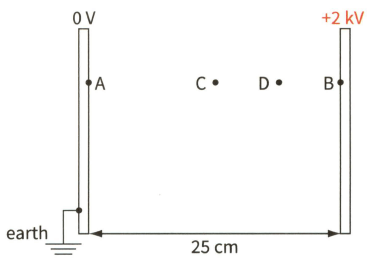
In Figure, two parallel plates are shown, separated by $25 \mathrm{~cm}$.
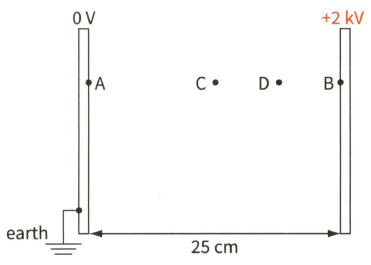
What is the electric field strength at $C$, and at $\mathrm{D}$ ?
In Figure, two parallel plates are shown, separated by $25 \mathrm{~cm}$.
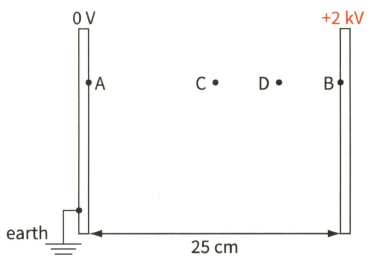
Calculate the electric force on a charge of $+5 \mu \mathrm{C}$ placed at $\mathrm{C}$. In which direction does the force act?
Use a diagram to explain how the electric force on a charged particle could be used to separate a beam of electrons $\left(\mathrm{e}^{-}\right)$ and positrons $\left(\mathrm{e}^{+}\right)$ into two separate beams. (A positron is a positively charged particle that has the same mass as an electron but opposite charge. Positron-electron pairs are often produced in collisions in a particle accelerator.)
